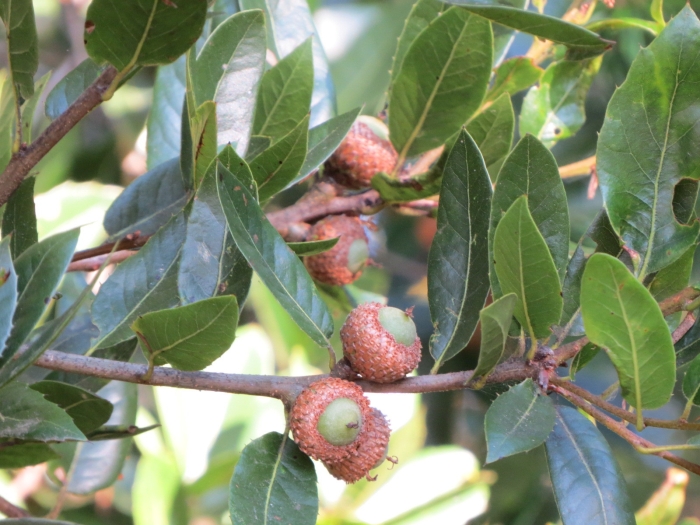Santa Cruz Island Oak
(Quercus parvula)
Santa Cruz Island Oak (Quercus parvula)
/
/

Garth Harwood
CC BY 4.0
Image By:
Garth Harwood
Recorded By:
Copyright:
CC BY 4.0
Copyright Notice:
Photo by: Garth Harwood | License Type: CC BY 4.0 | License URL: http://creativecommons.org/licenses/by/4.0/ | Rights Holder: Garth Harwood | Publisher: iNaturalist | Date Created: 2019-08-09T18:22-07:00 |

























Estimated Native Range
Summary
Quercus parvula, commonly known as the Santa Cruz Island oak, is an evergreen tree native to the coastal canyons and north-facing slopes of the California Coast Ranges, as well as the Channel Islands, including Santa Cruz Island. It is often found in association with coast redwoods (Sequoia sempervirens) and tanoaks (Notholithocarpus densiflorus), thriving in the understory of these taller trees. Quercus parvula typically reaches heights of 20 to 50 feet (6 to 15 meters) with a similar spread, and is recognized by its dense, rounded canopy and leathery, dark green leaves.
The Santa Cruz Island oak is valued for its adaptability to various soil types and its drought tolerance once established, making it suitable for California landscapes. It is used for reforestation, habitat restoration, and as an ornamental tree in gardens and parks. The tree’s acorns are a food source for local wildlife, and its dense foliage provides shelter for birds and other animals. In cultivation, it requires well-drained soils, minimal to moderate watering once established, and can tolerate full sun to partial shade. While it is generally disease-resistant, it can be susceptible to oak root fungus (Armillaria mellea).CC BY-SA 4.0
The Santa Cruz Island oak is valued for its adaptability to various soil types and its drought tolerance once established, making it suitable for California landscapes. It is used for reforestation, habitat restoration, and as an ornamental tree in gardens and parks. The tree’s acorns are a food source for local wildlife, and its dense foliage provides shelter for birds and other animals. In cultivation, it requires well-drained soils, minimal to moderate watering once established, and can tolerate full sun to partial shade. While it is generally disease-resistant, it can be susceptible to oak root fungus (Armillaria mellea).CC BY-SA 4.0
Plant Description
- Plant Type: Shrub, Tree
- Height: 20-50 feet
- Width: 20-50 feet
- Growth Rate: Moderate
- Flower Color: N/A
- Flowering Season: Spring, Summer
- Leaf Retention: Evergreen
Growth Requirements
- Sun: Full Sun
- Water: Low, Medium
- Drainage: Medium
Common Uses
Deer Resistant, Drought Tolerant, Low Maintenance
Natural Habitat
Coastal canyons and north-facing slopes of the California Coast Ranges and the Channel Islands, including Santa Cruz Island
Other Names
Common Names: Coast Oak, Island Scrub Oak
Scientific Names: , Quercus parvula, Quercus wislizeni f. parvula,
GBIF Accepted Name: